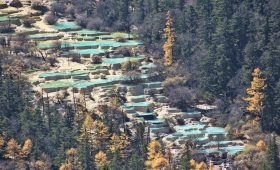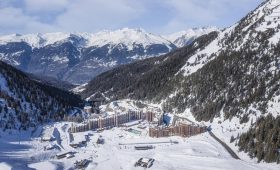Welcome to Galicia, a captivating region in northwestern Spain known for its striking landscapes, rich history, and vibrant culture. Whether you’re drawn to its historical significance, natural beauty, or culinary delights, Galicia offers a wealth of experiences for every traveler. In this guide, we’ll delve into the essential aspects of this remarkable destination, from its scenic coastlines to its cultural heritage.
Overview of Galicia
Galicia is an autonomous community in Spain, bordered by the Atlantic Ocean to the north and west, and neighboring Asturias to the east. Its landscape is a tapestry of rugged coastlines, verdant hills, and cultural landmarks that speak to its storied past.
Geography and Climate
Galicia’s diverse geography includes:
- Picturesque coastlines with beaches and dramatic cliffs
- Rolling hills and lush valleys
- Mountain ranges such as the Sierra de los Ancares and Serra do Xistral
The region experiences a temperate maritime climate, characterized by:
- Mild winters and cool summers
- Frequent rainfall, particularly in autumn and winter
- Ideal conditions for thriving vegetation and agriculture
Best Time to Visit
Your ideal time to visit Galicia depends on your interests:
- Spring (March to June): Perfect for hiking and exploring the countryside with pleasant weather and blooming flora.
- Summer (July to August): Great for enjoying the beaches, though it can be busier.
- Autumn (September to November): A wonderful time for wine enthusiasts, coinciding with the grape harvest.
- Winter (December to February): Offers a quieter experience and the chance to partake in local festivities.
Getting There
By Air
Galicia is served by three airports:
- Santiago de Compostela Airport (SCQ): The main hub with flights from various European cities.
- A Coruña Airport (LCG): Offers flights primarily to Madrid and Barcelona.
- Vigo Airport (VGO): Also connects to major Spanish cities.
By Train
Galicia is accessible by train, with high-speed connections from Madrid to Santiago de Compostela and A Coruña. The state-owned railway company Renfe operates these routes, providing efficient travel options.
By Bus
Long-distance buses, operated by companies like ALSA, connect Galicia with other Spanish cities, offering a comprehensive network for travelers.
Local Transportation
Public Transport
Galicia’s public transport includes:
- Buses: Extensive local and regional bus services connect towns and cities.
- Trains: The A Coruña-Vigo line is a fast and efficient way to travel along the Atlantic coast.
Car Rentals
Renting a car is a convenient option for exploring Galicia’s scenic countryside and coastal areas at your own pace.
Cultural Heritage
Galicia’s cultural identity is shaped by its Celtic roots and Roman influences. The region is renowned for:
- The historic Camino de Santiago pilgrimage route.
- Traditional Galician music, featuring the gaita (bagpipe).
- Festivals like San Juan, celebrated with beach bonfires.
Historical Sites
Notable historical sites include:
- Santiago de Compostela Cathedral: A UNESCO World Heritage Site and the reputed burial site of Saint James.
- Castillo de San Felipe: A historic fortress in Ferrol.
- Pazo de Oca: An elegant 18th-century palace near Santiago.
Natural Wonders
Galicia is celebrated for its natural beauty:
- Rías Baixas: Known for its estuaries, beaches, and seafood.
- Islas Cíes: A national park with pristine beaches and hiking trails.
- Fragas do Eume: A lush natural park with dense forests and the Eume River.
Outdoor Activities
Galicia offers a range of outdoor activities:
- Hiking: Trails like the Camino de Santiago provide breathtaking views.
- Surfing: Popular beaches include Pantín and Razo.
- Whale Watching: The coastal waters are known for cetacean sightings.
Culinary Delights
Galician cuisine is renowned for its fresh seafood and local produce. Must-try dishes include:
- Pulpo a la Gallega: Octopus seasoned with paprika and olive oil.
- Empanada Gallega: A savory pie with various fillings.
- Caldo Gallego: A hearty soup with greens, potatoes, and chorizo.
Wine and Spirits
Galicia is famous for its wines, particularly:
- Albariño: A crisp white wine from the Rías Baixas region.
- Ribeiro: Known for both white and red wines.
Festivals and Events
Galicia hosts numerous festivals celebrating its culture and traditions:
- Festa do Marisco: A seafood festival in O Grove.
- Festa de San Juan: A midsummer celebration with bonfires.
- Festa da Historia: A historical reenactment in Betanzos.
In conclusion, Galicia is a region that offers a rich tapestry of natural beauty, historical depth, and cultural vibrancy. Whether you’re exploring its coastal trails, savoring its culinary offerings, or immersing yourself in its history, Galicia promises a memorable and enriching experience.




